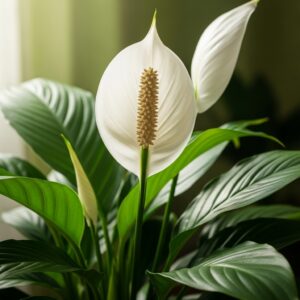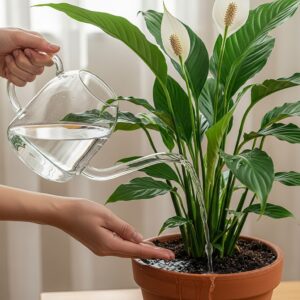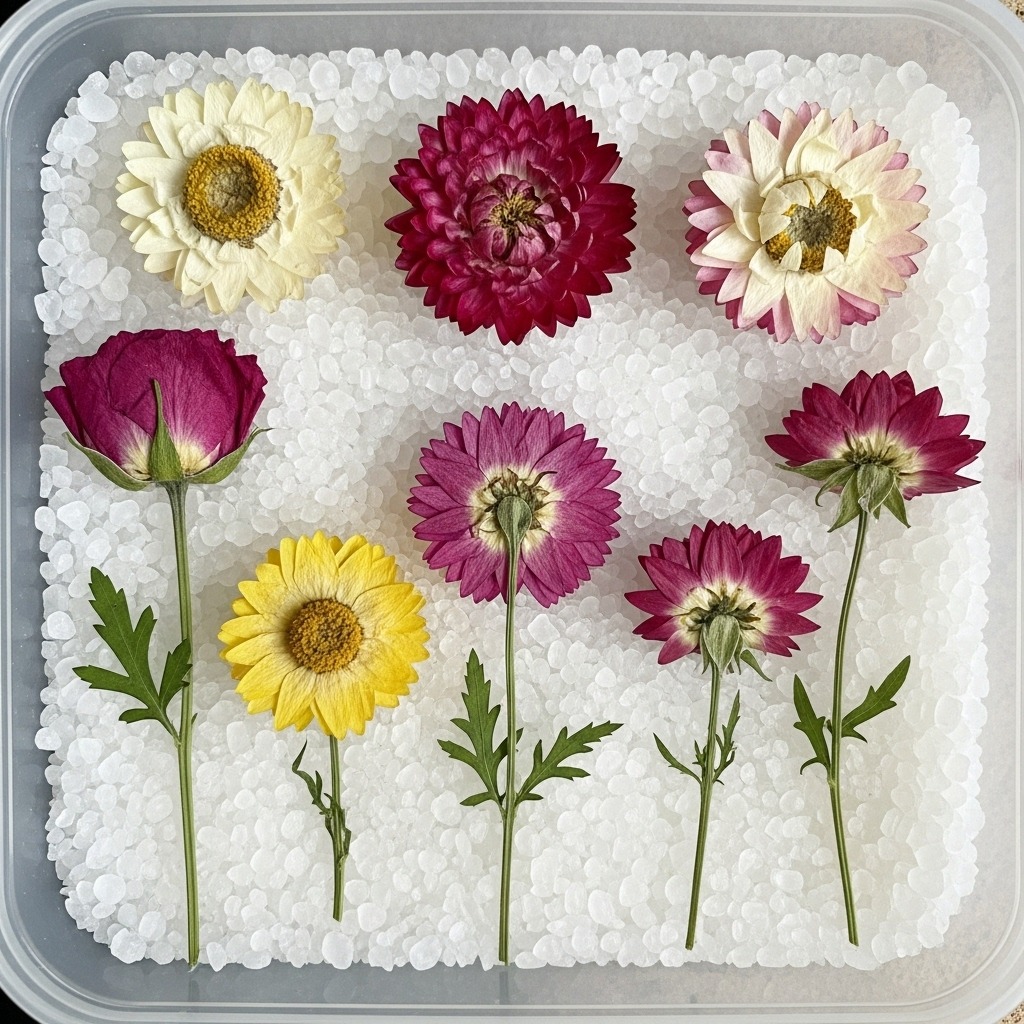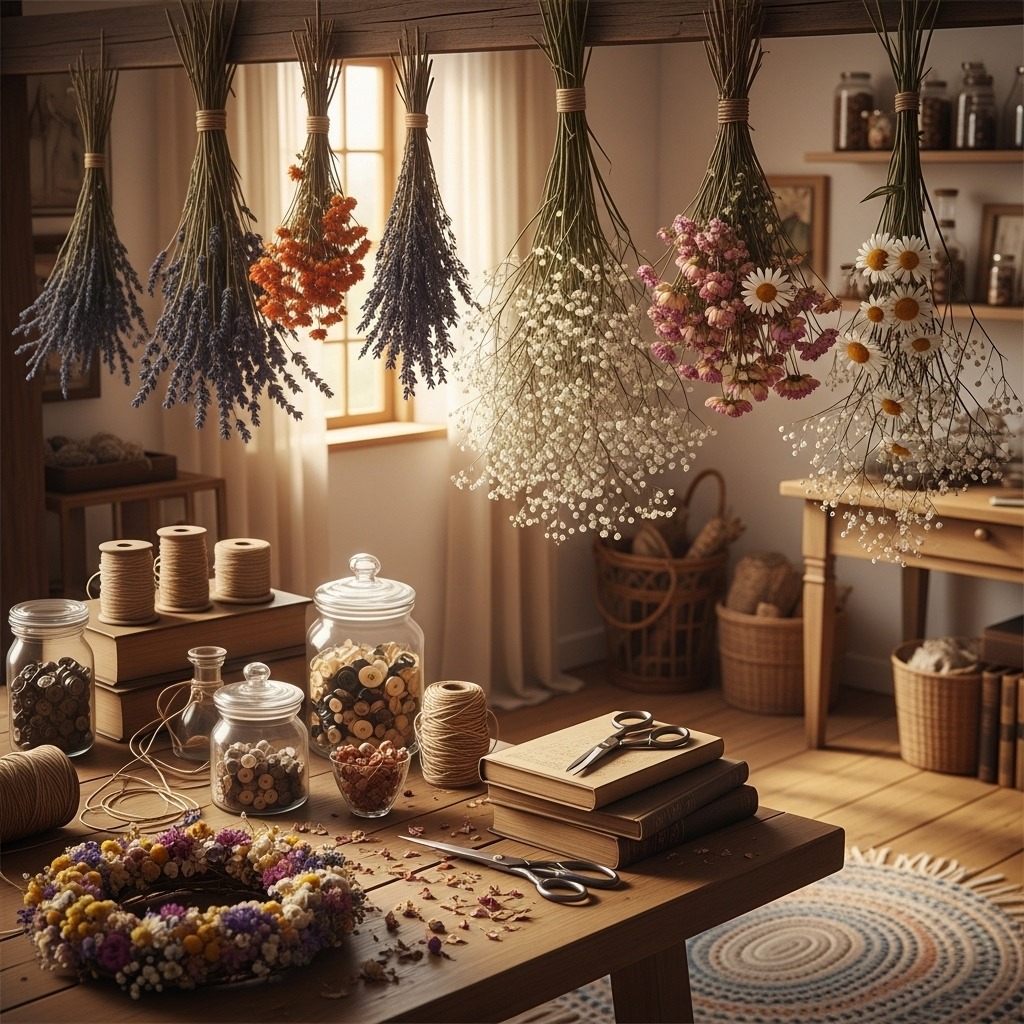The Peace Lily (Spathiphyllum) is one of the most loved houseplants for good reason.
With its glossy dark-green leaves, elegant white blooms, and incredible air-purifying abilities, it’s a must-have for anyone looking to add a touch of nature’s calm indoors.
Whether you’re a beginner or a seasoned plant parent, this Peace Lily growing guide will help you keep your plant thriving all year long.
🌱 Understanding the Peace Lily

Native to tropical regions of Central and South America, Peace Lilies aren’t true lilies but belong to the Araceae family.
They’re known for their signature white “flowers” — actually modified leaves called spathes that surround a yellow spadix.
Beyond their beauty, they naturally purify indoor air by removing toxins like formaldehyde and benzene, making them perfect for homes and offices alike.
💡 Best Light Conditions

Peace Lilies love bright, indirect light — think of the dappled shade under a forest canopy.
Place them near a north- or east-facing window for the best results.
Too little light: Your plant may stop blooming and its leaves could turn dark green.
Too much direct sunlight: The leaves can scorch or develop brown tips.
If your Peace Lily isn’t flowering, it’s often a sign it needs just a bit more light.
💧 Watering Your Peace Lily the Right Way

The biggest mistake plant lovers make is overwatering. Peace Lilies prefer slightly moist soil but can’t handle soggy roots.
Watering tip: Check the top inch of soil — if it feels dry, it’s time to water.
Use room-temperature water and avoid chlorinated water if possible.
Signs of underwatering: Droopy leaves that quickly perk up after watering.
Signs of overwatering: Yellowing leaves and mushy stems.
Pro tip: Peace Lilies are dramatic — they’ll droop to tell you when they’re thirsty, but don’t wait too long to revive them!
🌸 Encouraging Blooms
Want those signature white spathes to appear more often? Here’s how to encourage flowering:
Give your plant bright, filtered light and consistent watering.
Use a balanced liquid fertilizer once a month during spring and summer.
Make sure the plant isn’t root-bound — Peace Lilies like space to grow.
With proper care, your plant can bloom multiple times throughout the year, adding elegance and tranquility to your space.
🪴 Potting & Soil Needs
Peace Lilies thrive in loose, well-draining soil. A mix of peat moss, perlite, and a bit of compost is perfect.
When repotting (usually every 1–2 years), choose a pot one size larger with drainage holes.
If your plant looks cramped or roots are poking out of the pot, it’s time for a new home.
Repotting encourages new growth and helps prevent root rot.
🌡️ Ideal Temperature & Humidity
Since Peace Lilies come from tropical climates, they love warmth and humidity.
Temperature: Keep them between 65°F–80°F (18°C–27°C).
Avoid drafts or cold air, especially from air conditioners.
For humidity, mist the leaves a few times a week or place the pot on a tray of pebbles and water.
🐛 Common Problems & Fixes

Even the most low-maintenance plants face challenges. Here’s what to watch for:
Brown leaf tips: Often due to dry air or over-fertilizing. Trim off damaged tips and adjust care.
Yellow leaves: Usually from too much water or poor drainage.
No blooms: Check lighting — move the plant to a brighter spot.
Pests: Occasionally, Peace Lilies can attract spider mites or mealybugs. Wipe leaves with a damp cloth and use insecticidal soap if needed.
🌿 Why You’ll Love Having a Peace Lily
Peace Lilies do more than just look good — they bring peace, quite literally.
They filter indoor air, help maintain humidity, and symbolize harmony and hope.
Whether placed on a work desk, living room corner, or bedroom shelf, they add a touch of natural calm that’s hard to match.
Growing a Peace Lily is a rewarding experience — it’s elegant, forgiving, and endlessly soothing to care for.
With just the right mix of light, water, and warmth, you’ll enjoy lush foliage and serene white blooms all year long.
If you’ve been searching for a plant that’s both beautiful and beginner-friendly, the Peace Lily is the perfect match.

